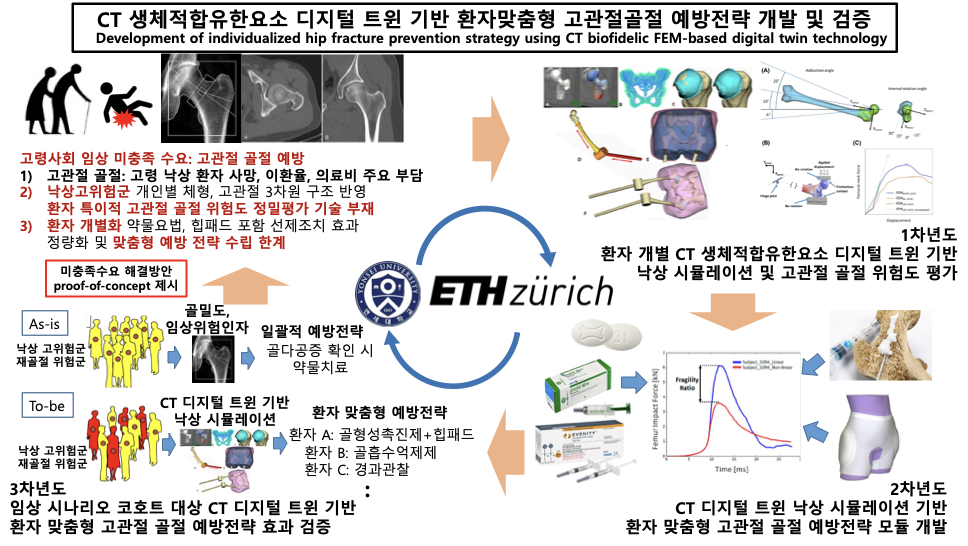Development of individualized hip fracture prevention strategy using CT biofidelic FEM-based digital twin technology
- South Korea is rapidly transitioning into a super-aged society, necessitating a shift in medical services from treatment to prevention.
- Hip fractures are a major age-related condition, associated with increased mortality, morbidity, mobility impairment, re-fracture rates, and medical costs.
- The incidence of hip fractures rises sharply with age, and it is estimated that over 50% of all fractures will occur in Asia.
- Currently, the diagnosis of high-risk groups for hip fractures is based on DXA bone density and clinical factors, but there is a limitation in sensitivity.
- Current diagnostic tools, such as bone density assessment focused solely on bones, have limitations in predicting individual hip fractures during falls, as they do not account for body shape or the muscles and fat around the hip: Swiss CT-based finite element model (FEM) technology addresses this.
- Various preventive strategies, such as anti-resorptive agents, bone formation promoters, and hip pads, exist. However, there is a lack of methodology and evidence to create personalized prevention strategies: a Korean-customized digital twin in-silico trial to establish hip fracture prevention strategies.
- Proposed solution to overcome limitations: Development and validation of precise hip fracture risk prediction and personalized prevention strategies using CT FEM digital twin for high-risk fall groups based on clinical scenarios through a collaborative study between Korean (bone metabolism clinical experts) and Swiss (CT FEM digital twin experts) researchers.
